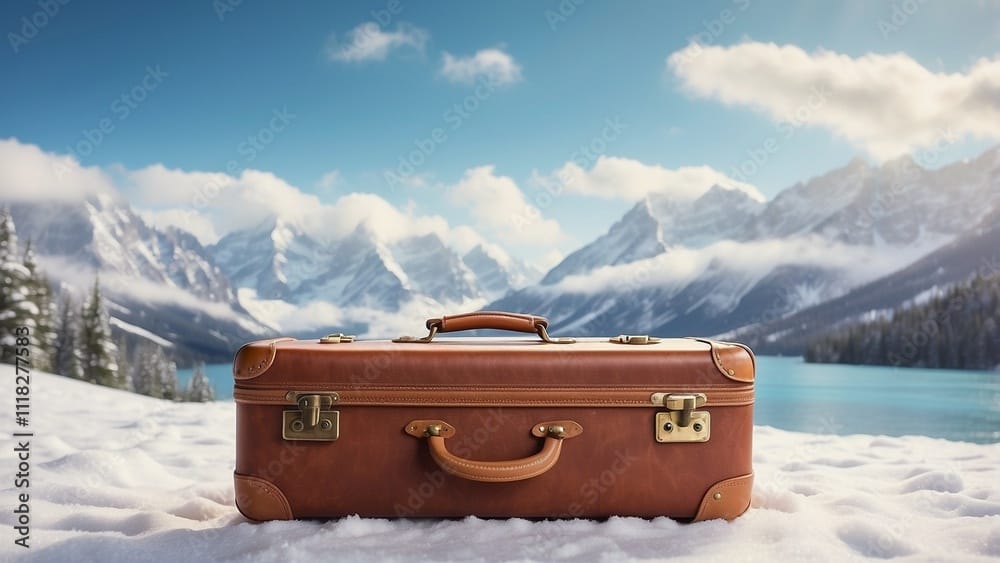Planning a trip to Europe in 2025? From the romantic streets of Paris to the picturesque fjords of Norway and the bustling markets of Istanbul, Europe offers a mix of culture, history, and adventure. Packing efficiently can make all the difference in ensuring a stress-free and enjoyable journey. Here’s a comprehensive guide to help you pack for your next European adventure.
1. Travel Documents and Essentials
Start with the most critical items. Without these, your trip might end before it even begins:
- Passport and Visas: Ensure your passport is valid for at least six months beyond your travel dates. Check if you need a visa for any countries on your itinerary.
- Travel Insurance: A must-have for peace of mind. Choose a plan that covers health, trip cancellations, and lost luggage.
- European Travel Information and Authorization System (ETIAS): If you’re a non-EU citizen, confirm whether you need ETIAS authorization for 2025.
- Driver’s License and International Driving Permit (IDP): Necessary if you plan to rent a car.
- Copies of Important Documents: Photocopy or scan your passport, ID, and travel insurance documents. Keep a digital and a printed copy.
- Credit and Debit Cards: Inform your bank about your travel plans to avoid issues with international transactions.
- Currency: Carry some local currency for emergencies, though cards are widely accepted.
2. Luggage and Bags
Choosing the right luggage can streamline your travel experience:
- Main Suitcase or Backpack: Opt for lightweight, durable, and easy-to-move options. A carry-on-sized suitcase is ideal for short trips, while a larger one may be necessary for longer stays.
- Daypack: A compact, lightweight backpack or bag for daily outings.
- Packing Cubes: Keep your clothes organized and save space.
- Laundry Bag: For dirty clothes during your trip.
3. Clothing
Europe’s weather varies significantly depending on the season and region. Pack versatile clothing to suit different climates and occasions:
Summer (June to August):
- Lightweight shirts, blouses, and T-shirts.
- Shorts, skirts, or dresses.
- Comfortable walking shoes or sandals.
- A wide-brimmed hat and sunglasses.
Winter (December to February):
- Thermal layers and woolen sweaters.
- A waterproof winter coat.
- Gloves, scarves, and a beanie.
- Waterproof boots with good traction.
Spring and Autumn (March to May; September to November):
- Layers like cardigans, light jackets, or hoodies.
- Long pants and comfortable tops.
- A raincoat or compact umbrella.
Year-Round Essentials:
- Underwear and socks.
- Sleepwear.
- A swimsuit (for pools, spas, or beaches).
- A lightweight scarf for added style or warmth.
4. Shoes
Comfortable footwear is essential for Europe, where you’ll likely do a lot of walking:
- Walking Shoes: Comfortable sneakers or slip-ons for exploring cities.
- Formal Shoes: For fine dining or special events.
- Sandals or Flip-Flops: Perfect for summer trips or lounging at the beach.
- Hiking Boots: If your itinerary includes outdoor adventures.
5. Toiletries and Personal Care
Many European accommodations provide basic toiletries, but it’s always good to have your essentials:
- Travel-sized shampoo, conditioner, and body wash.
- Toothbrush, toothpaste, and floss.
- Razor, deodorant, and any preferred grooming products.
- Sunscreen and lip balm with SPF.
- Makeup and remover (if needed).
- A small first aid kit with band-aids, pain relievers, and motion sickness tablets.
6. Electronics and Gadgets
Stay connected and capture memories with these devices:
- Smartphone and Charger: Ensure it’s unlocked for local SIM cards.
- Power Bank: For charging on the go.
- Universal Power Adapter: Europe’s plugs vary, so bring a universal adapter.
- Camera: If your phone camera isn’t sufficient.
- Headphones or Earbuds: Ideal for long flights or train rides.
- E-Reader or Tablet: For entertainment and travel guides.
- Laptop: If you need to work or prefer managing photos on a bigger screen.
7. Health and Safety Essentials
Your health and safety should always be a priority:
- Prescription medications with a copy of your prescription.
- A reusable water bottle to stay hydrated.
- Hand sanitizer and disinfectant wipes.
- Face masks (if required in some areas).
- Insect repellent for rural or forested areas.
8. Travel Comfort Items
Long flights, train rides, or road trips can be tiring. Make them more comfortable with:
- A neck pillow.
- An eye mask and earplugs.
- Snacks and a refillable water bottle.
- A travel blanket or shawl.
9. Season-Specific Items
Winter:
- Hand warmers.
- Insulated flask for hot beverages.
Summer:
- Cooling towels.
- Travel-size insect repellent for evenings.
10. Cultural Considerations
Europe’s cultural diversity means dressing appropriately is key:
- Religious Sites: Pack modest clothing to cover shoulders and knees.
- Formal Events: Bring at least one semi-formal outfit.
11. Packing Tips
- Roll Clothes: Saves space and minimizes wrinkles.
- Limit Liquids: Adhere to airline restrictions for carry-ons.
- Pack a “Just-in-Case” Bag: Include essentials like a spare outfit, medications, and toiletries in your carry-on.
- Check Baggage Limits: Confirm weight and size restrictions for airlines and trains.
12. Miscellaneous Items
- A lightweight travel guide or phrasebook.
- A journal or notebook for memories.
- Small padlocks for luggage security.
- A compact shopping bag for groceries or souvenirs.
- A travel-friendly laundry detergent for washing clothes.
Final Thoughts
Packing for a European trip in 2025 doesn’t have to be overwhelming. The key is preparation and packing smartly to suit your itinerary and the season. Prioritize comfort, weather-appropriate clothing, and essentials to make your journey memorable and stress-free. Bon voyage!






Leave a Reply